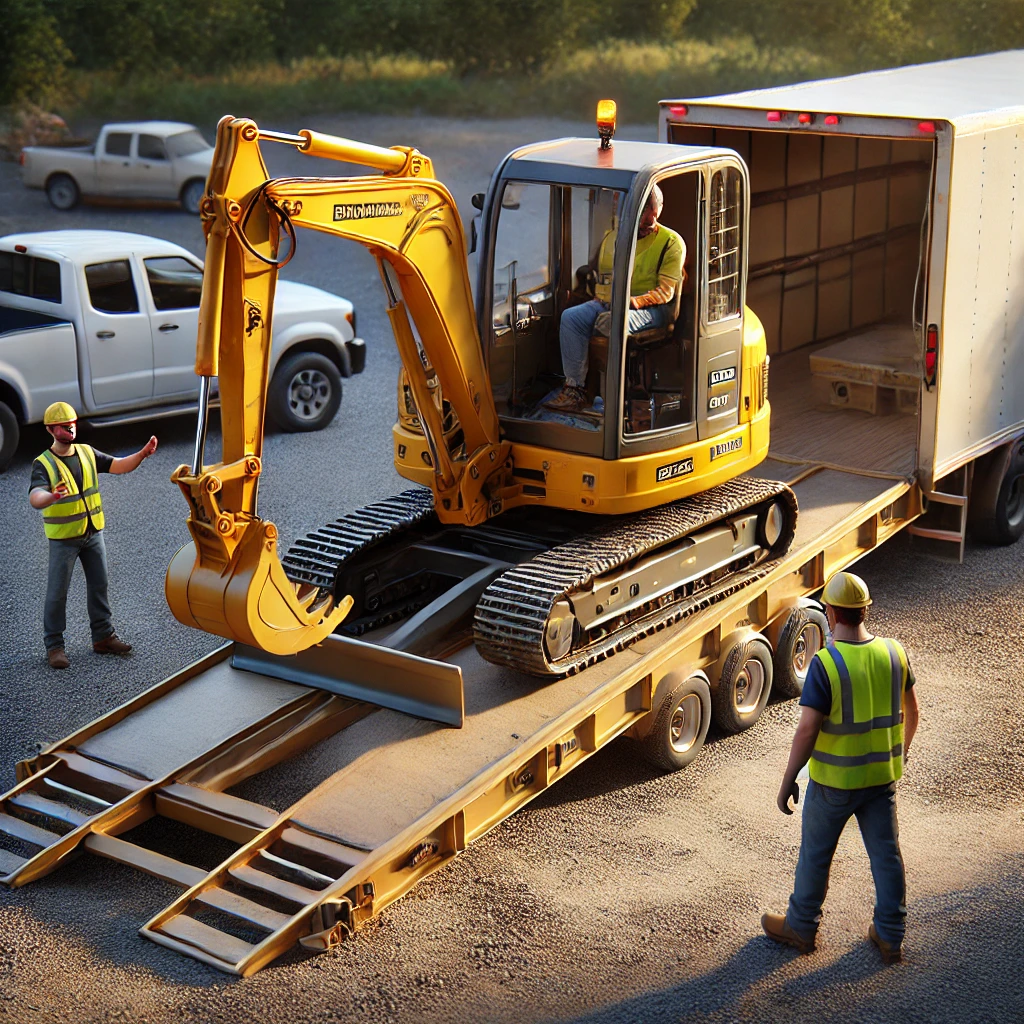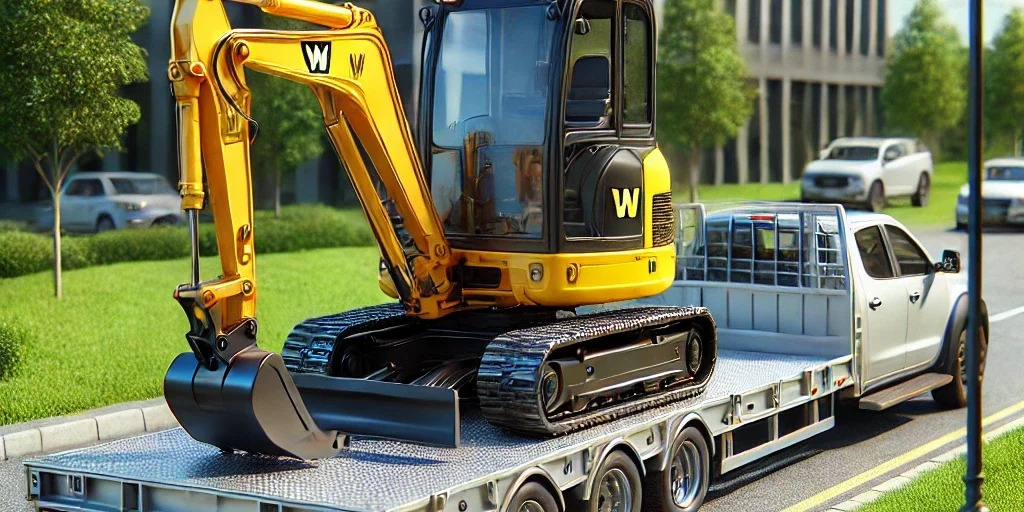When you need to transport your mini excavator to a remote workplace, regardless of how heavy or large it is, it can become a real challenge. The most difficult part is loading the machine. If this isn’t done properly and with the right tools, it can tip over. This creates a serious safety hazard and expensive damage to both the machine and the transport vehicle. In this article, we explain how you can transport a mini excavator using the most common and safest methods.
Generally, there are two main methods to safely transport a mini excavator. If it weighs less than a ton, you can easily load it into a pickup. Otherwise, for weights over a ton, a trailer or truck must be used. These are the most suitable vehicles for transporting heavy loads.
Selecting the Right Loading Ramps
The first step to safely transport a mini excavator is selecting the right loading ramps. These tools are best suited for the delicate phase of loading and unloading the machine. Therefore, they should be carefully selected. Generally, they can be made of steel or aluminium, depending on the weight and model of the machine being loaded. Additionally, they should be selected based on the weight of the mini excavator that needs to be transported. Due to the wide variety of sizes available commercially, they are among the most frequently rented products. The selection should be made after some mathematical calculations:
L = (A ÷ G) x 100, where L is the length of the ramps, A is the height of the loading platform, and G is the slope of the ramps, which is typically recommended to be 30%.
Once the length is calculated, you can select ramps with the appropriate width for the tracks or wheels of the vehicle. For example, with a small excavator with a wheelbase of 1m, track width of 25cm, weight of 1500 kg, and a vehicle with a loading platform height of about 1.2m, the ideal length of the ramps would be (1.2 ÷ 30) x 100 = 4m.
Transport a Mini Excavator on a Pickup or Van
To correctly load and transport a mini excavator in a van, several steps must be followed. These, as you will see, make transporting the machine safe and reliable. First, ensure that the handbrake is engaged, and the vehicle is parked on a level, obstacle-free surface. This way, you avoid the mini excavator moving during loading. And you don’t risk damaging the equipment or the vehicle.
Check both the height of the van and the mini excavator to prevent damage to the equipment or the roof of the vehicle. If the machine is too tall to fit in the van, check if the roof can be removed. In fact, many mini excavator models offer the option to dismantle or tilt the roof. Making them more compact for transport. If you encounter difficulties, you can opt for a truck to avoid having to remove the roof. Alternatively, you can also use a trailer.

Safe Loading Procedures to Transport a Mini Excavator
After all these checks have been completed, the ramps must be secured and aligned to prevent them from slipping during loading. Finally, you can drive your mini excavator onto the loading ramps from the side of the heaviest axle. Maintaining a low speed and constant direction. During this phase, it’s very important to constantly monitor the position of the machine and the alignment of the wheels to avoid tilting or unexpected movements.
By following these simple steps, you can load and transport your mini excavator. Like a professional, but most importantly, safely and without damaging it.
Transport a Mini Excavator on a Trailer
If you’ve chosen a trailer as the means of transport for your mini excavator, here are some useful tips to facilitate the loading operations. First, operations should be performed in a location without slopes or obstacles. After attaching the trailer to the vehicle, the loading ramps can be secured to the trailer with the special clamps provided with the ramp pair.
To secure the machine during loading or unloading, it’s advisable to use wedges or supports. To block the joint, stabilize the trailer, and prevent the mini excavator from falling off the ramps. After securing the ramps, the machine can be driven onto the loading platform. Finally, as the last step, secure the mini excavator with straps or chains to prevent it from tipping over during transport.
Conclusion
To transport a mini excavator, one must pay attention to how it’s done. To avoid hazardous situations and damage to both the machine and the transport vehicle. Certain rules must be followed to load the machine onto a van, truck, or trailer. Such as checking the vehicle’s height, the weight, and using fastening devices. Additionally, one should not forget that loading ramps for loading and unloading must be carefully selected. If uncertain, it’s advisable to consult professionals like rentmas. They can recommend the model with the right characteristics for your needs.






